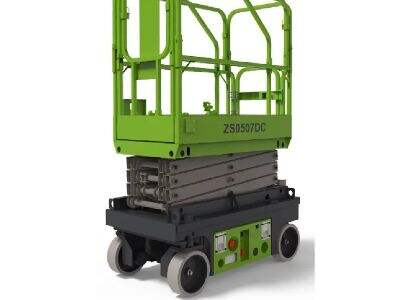Type of Terrain The type of terrain significantly impacts how well aerial work platforms, including scissor lifts and cherry pickers, operate at the job site. Stability, security, mobility and a general working efficiency of said machine can substantially depend on the kind of ground of the machine. Operators need to take into account the challenges and opportunities which different types of ground can bring, in order to choose the right equipment for the job – in this article, away from what height does the equipment work, we will present in detail in what ways does the terrain type affect the efficiency of this equipment, and how to overcome these challenges in order to achieve maximal productivity as possible in any workplace
Effect of terrain condition on stability and safety of aerial devices
Aerial working platforms often working on the rough conditions, due to the uneven ground, such as slopes, incoherent, or gravel ground, it can cause instability and potential dangerous to the earthmoving working equipment. The inclination of the vehicle or the loss of control over the vehicle is inevitably greater when driving on such uneven ground. This can make operators and passers by susceptible to injury or injury by accident. Operators must evaluate the ground before using aerial equipment and will need to take proper safety precautions to maintain control and stabilization. Specialist gear with stabilizing outriggers or terrain compensation systems may at times also be necessary to provide additional stability and safety on challenging ground
Exploring the effect of rough terrain on the mobility of an aerial platform
Difficulties can also be encountered by operators in accurately placing the equipment where desired especially when the dogs or footing are not even. This can be inefficient and slow-down work and may even reduce the quality of the work performed. Operators should be cognizant of how ground conditions, such as soft ground, uneven surfaces or objects, will affect the operation of aerial equipment. Recognizing these challenges enables the operator to adjust the operating style and select the right equipment for the application to help avoid cur-cut malfunctions and maintain efficient operation
The necessity of choosing the most appropriate aerial platform for a variety of ground conditions
The selection of the right aerial equipment for the job site is the means for achieving demand performance and productivity. Various types of aerial equipment are used to cover different types of terrain when in the air safely and efficiently. Rough terrain scissor lifts, for example, are specifically built to work on the most challenging ground, whereas track-mounted spider lifts are well suited to working in places where you need to reach places on difficult terrain. Through choosing the appropriate equipment for the terrain you are dealing with, workers will be able to stay productive while reducing the possibility of danger as much as possible on the job site
Handling of rough terrain with purpose-built aerial equipment
Cool land development takes some unique equipment that can endure the harsh and rolling conditions with an operator. One of the manufacturers, for instance, is Weide and they provide numerous types of aerial working devices which have the ability to work in rough terrain. Heavy-duty tires, all-terrain capabilities, and sophisticated stabilization systems make it possible to work the land safely and effectively. Specialized aerial equipment can help get the job done despite the challenges of the terrain
Role of terrain type on Aerial Work efficiency and productivity
The nature of the ground can directly influence the effectiveness and efficiency of aerial work activities. Smooth, flat surfaces allow operators to move equipment around, and complete work fast. But on the other hand, operations can be slowed when the terrain is rough and uneven, which increases the odds of mishaps. Thinking about the terrain and choosing the correct equipment can make the job much more efficient, and the worksite much more productive. Aerial equipment with features tailored to specific types of terrain can help the job go smoothly and ensures work gets done safely and efficiently. Knowing how different terrain types affect the performance of aerial working equipment is crucial for operators in order to work efficiently on all kinds of work sites. By using the proper tools, modifying the way they work and paying attention to safety concerns, operators can best the terrain in order to turn any job site into a success story
Table of Contents
- Effect of terrain condition on stability and safety of aerial devices
- Exploring the effect of rough terrain on the mobility of an aerial platform
- The necessity of choosing the most appropriate aerial platform for a variety of ground conditions
- Handling of rough terrain with purpose-built aerial equipment
- Role of terrain type on Aerial Work efficiency and productivity

